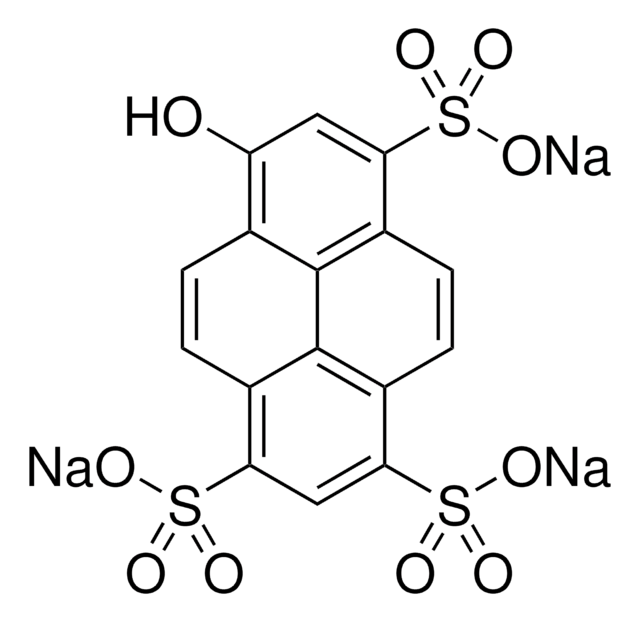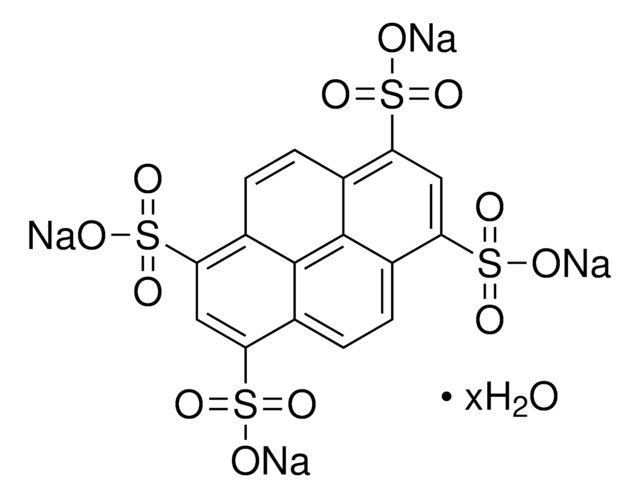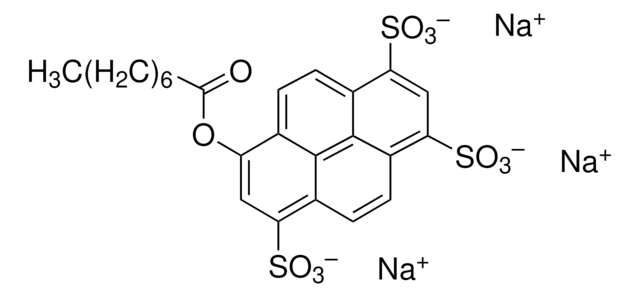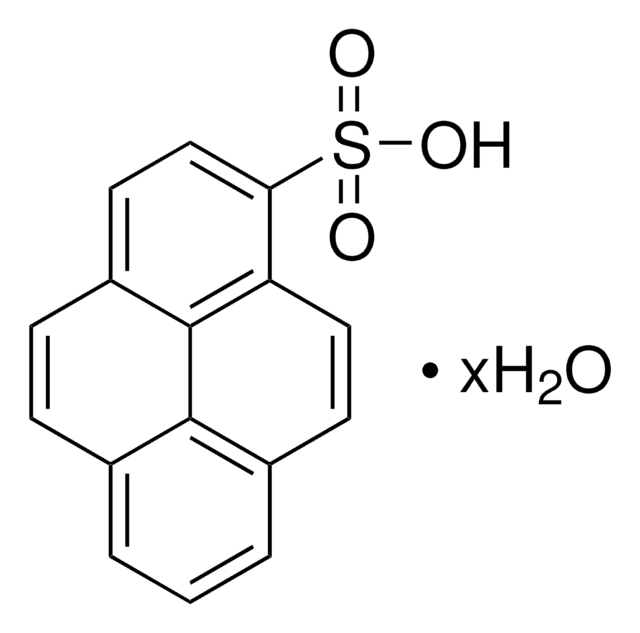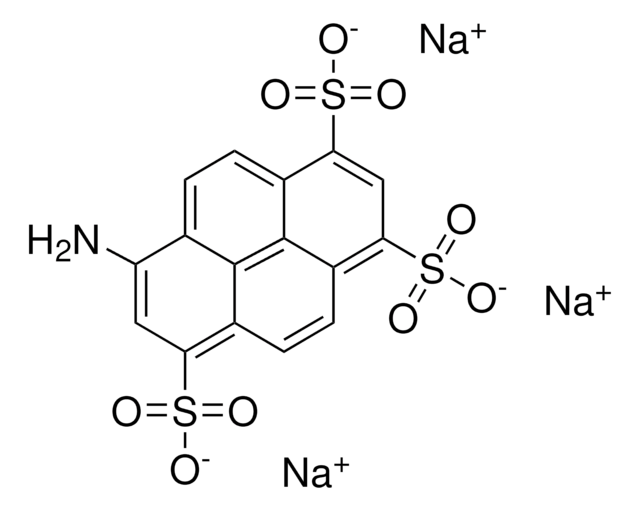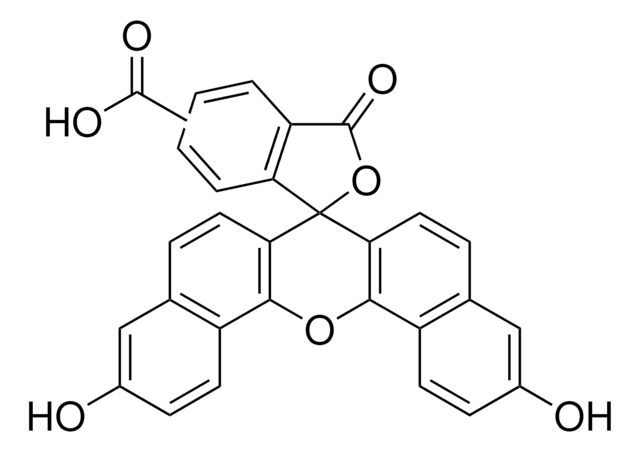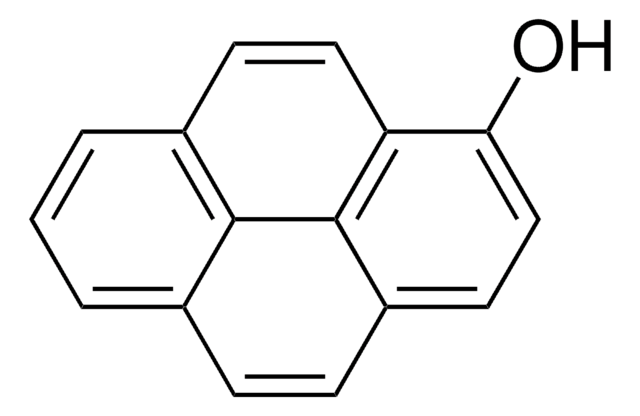37920
6,8-Dihydroxy-1,3-pyrenedisulfonic acid disodium salt
BioReagent, suitable for fluorescence, ≥97.0% (HPCE)
동의어(들):
DHPDS, Disodium 6,8-dihydroxy-1,3-pyrenedisulfonate
About This Item
추천 제품
제품 라인
BioReagent
Quality Level
분석
≥97.0% (HPCE)
양식
powder
pKa
7.33
8.53
mp
≥250 °C (lit.)
solubility
DMF: soluble
H2O: soluble
methanol: soluble
형광
λex 405 nm; λem 456 nm in 0.1 M citrate pH 3.0
λex 458 nm; λem 498 nm in 0.1 M Tris pH 8.0
적합성
suitable for fluorescence
SMILES string
[Na+].[Na+].Oc1cc(O)c2ccc3c(cc(c4ccc1c2c34)S([O-])(=O)=O)S([O-])(=O)=O
InChI
1S/C16H10O8S2.2Na/c17-11-5-12(18)8-2-4-10-14(26(22,23)24)6-13(25(19,20)21)9-3-1-7(11)15(8)16(9)10;;/h1-6,17-18H,(H,19,20,21)(H,22,23,24);;/q;2*+1/p-2
InChI key
JISMNCQKTAIERN-UHFFFAOYSA-L
애플리케이션
포장
기타 정보
신호어
Warning
유해 및 위험 성명서
예방조치 성명서
Hazard Classifications
Eye Irrit. 2 - Skin Irrit. 2 - STOT SE 3
표적 기관
Respiratory system
Storage Class Code
11 - Combustible Solids
WGK
WGK 3
Flash Point (°F)
Not applicable
Flash Point (°C)
Not applicable
개인 보호 장비
dust mask type N95 (US), Eyeshields, Gloves
이미 열람한 고객
자사의 과학자팀은 생명 과학, 재료 과학, 화학 합성, 크로마토그래피, 분석 및 기타 많은 영역을 포함한 모든 과학 분야에 경험이 있습니다..
고객지원팀으로 연락바랍니다.